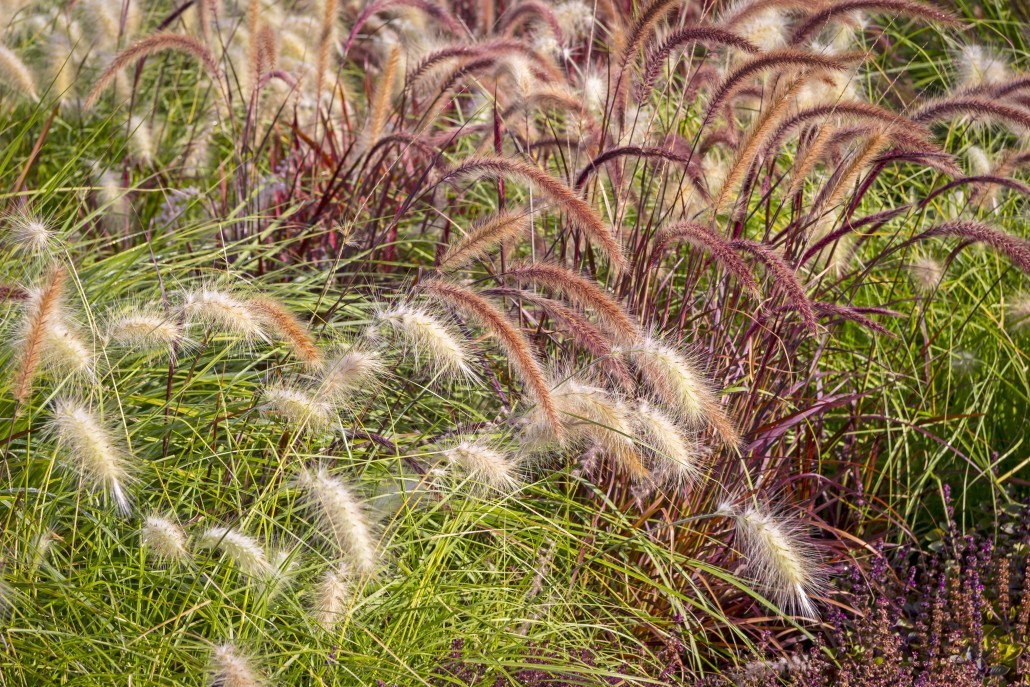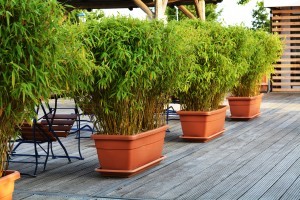Calamagrostis is a medium to high ornamental grass with a beautiful, sleek, vertical habit. It has very striking flowering panicles that appear in the summer. They stay upright throughout the growing season and turn into a straw yellow in winter.
Calamagrostis x acutiflora ‘Karl Foerster’ grows quite high – up to 1.50-1.80 m – and reaches about 60 cm wide. This variety starts to bloom quite early (June-July-August). The narrow, elegant, beige, purplish spikes start to appear in late June already. By the end of August, the flowering panicles fade to a golden brown. The feathers stay upright well into the winter and create an attractive winter silhouette. You can add quite a lot of height to a border by planting Calamagrostis x acutiflora ‘Karl Foerster’ in small groups.
Calamagrostis x acutiflora ‘Overdam’ grows up to 1 to 1.30 m and is therefore well suited for smaller gardens. The lovely variegated foliage features green leaves with white margins. This species has purple-brown spikes that turn a golden yellow later in the year. They remain decorative well into the winter.
Pruning
Calamagrostis should be cut back to 10-20 cm from the ground after the winter, right before the new growing season starts.
Care
Calamagrostis can be planted from spring until the beginning of autumn and can be transplanted in the spring. You can plant about 7 plants per square metre.
You can give your Calamagrostis some DCM organic fertiliser for ornamental grasses and bamboo. If you want to work the soil first, you can mix in some universal soil improver.
- Position: full sun/partial shade
- Soil: well-drained soil
- Flowering time: July to October
- Height: depending on the variety
- Evergreen: no
- Hardy: yes

 They require very little maintenance and are resistant to pests and diseases. There is a wide variety of ornamental grasses in terms of location, habit, blade, leaf colour, height, …
They require very little maintenance and are resistant to pests and diseases. There is a wide variety of ornamental grasses in terms of location, habit, blade, leaf colour, height, …





